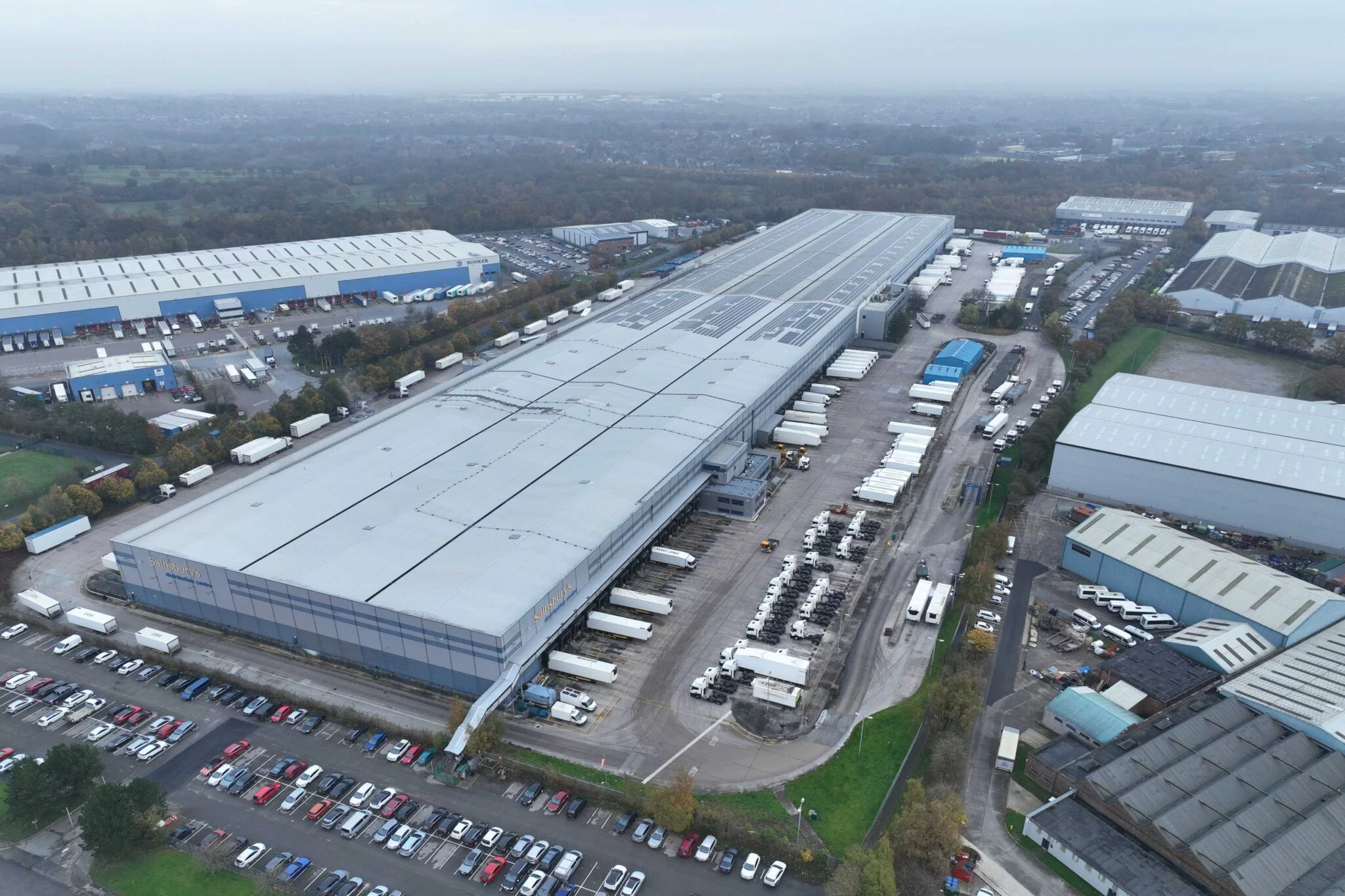Tritax Big Box REIT has purchased the 650,000 sq ft Sainsbury’s distribution centre in Haydock in an off-market deal for £75 million. The transaction represents a net initial yield of 6.0%.
The deal, which was arranged by commercial real estate firm Colliers, sees the REIT securing a well specified distribution warehouse which is strategically positioned to service the North West, located on junction 23 of the M6, between Liverpool and Manchester. The cross-dock distribution centre, with chilled and ambient spaces, is currently let to Sainsbury’s until 2038, with an uncapped RPI rent review due in 2028.
In 2024, the industrial market in the North West saw occupiers take-up 2.9million sq ft in units over 100,000 sq ft – a 21.5 per cent increase year-on-year. Rental growth in the region hit 7.5 per cent for the year, surpassing all other regional markets, including London.
Aaron Hulait, Transaction Director at Tritax Big Box, said: “This acquisition cements our commitment to carefully curating our portfolio based on our sector strength, experience and knowledge. We’re delivering on our objective of rotating out of non-strategic assets, inherited through the acquisition of UKCM, and redeploying capital into attractive logistics opportunities such as Haydock, which has strong build credentials as well as being sited in a location which will support evolving supply chain demands in the North West.”
Michael Kershaw, director in Colliers’ National Capital Markets team, was responsible for identifying and securing the opportunity for Tritax. He said: “The North West is always a strong market due to the cluster of regional cities with significant population sizes, which are really well served by the UK road network. This investment is uniquely positioned to perform very well; the combination of short-term uncapped RPI performance and medium-term rental performance is rare and attractive.”
The property was acquired from a private client of Mutual Finance. Founded by Raed Hanna, Mutual Finance provides real estate financing and debt solutions across commercial real estate asset classes and has arranged more than £50 billion in committed facilities during the last 30 years.



